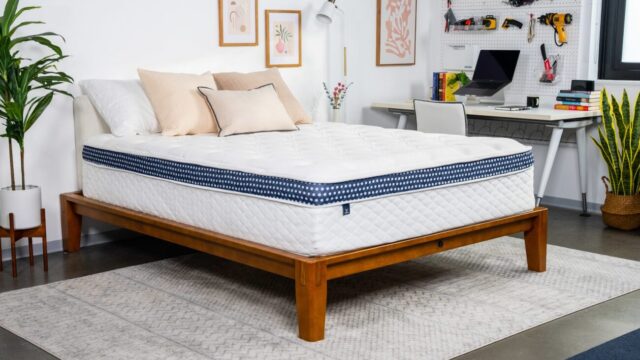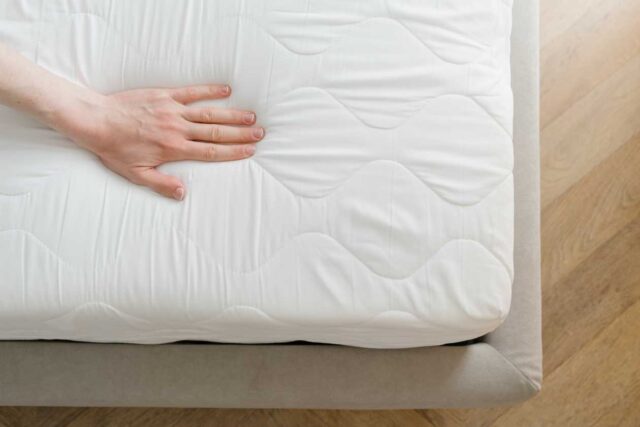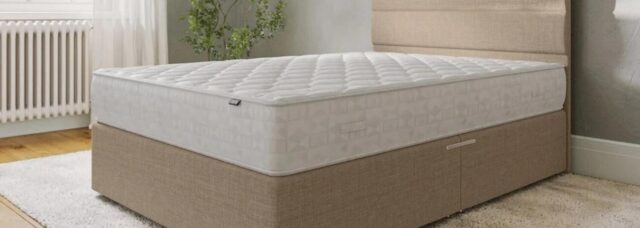
When embarking on the journey to find the perfect sleeping setup, understanding the potential discrepancies between mattress and bed sizes is the first step.
These discrepancies can occur due to a variety of factors including brand-specific sizing, differences in measurement standards from country to country, and unique design features of the bed frame. For example, a European king-size bed differs from its American counterpart, leading to confusion if not properly researched.
Moreover, the construction of the bed frame, including slats and side rails, can affect how well the mattress fits.
Importance of Proper Mattress-Bed Sizing
The significance of selecting a mattress that aligns perfectly with your bed frame extends beyond mere aesthetics. A bedding that fits well within the confines of the bed frame provides the foundational support needed for a restful sleep.
This support is crucial for spinal alignment and the alleviation of pressure points, which can significantly affect one’s health over time. An oversized or undersized mattress can lead to a host of issues, including uneven wear and tear, reduced lifespan of the bedding, and even physical discomfort or injury from misalignment during sleep.
Proper sizing ensures that the sleeper can fully utilize the ergonomic benefits of their mattress, promoting better sleep health and overall well-being.
Factors Influencing Mattress-Bed Compatibility

The compatibility between your sleeping surface and its frame is influenced by various factors, making it crucial to consider the specific characteristics of both. The type of frame plays a significant role; for instance, platform beds require a sturdy, possibly thicker mattress for optimal support without a box spring, whereas traditional frames might need a box spring to reach the desired height and support level.
Additionally, the inclusion of a headboard or footboard can affect the perceived size and fit of the bedding, especially in decorative frames that might encroach upon the mattress area.
Other considerations include the use of mattress toppers, which can add height and change the fit. Understanding these variables ensures a harmonious balance between bed and bedding, contributing to both aesthetic appeal and functional support.
Pros and Cons of Matching Mattress and Bed Sizes
Opting for a mattress that perfectly matches the bed frame size offers numerous benefits, including a cohesive look and optimal support and stability. However, it’s not without its drawbacks, particularly in situations where exact sizing isn’t feasible due to unique bed designs or when using antique frames with non-standard dimensions.
In such cases, slightly larger mattresses can provide extra edge support, which is beneficial for those who tend to sleep close to the edge. Conversely, bedding that’s slightly smaller than the frame can afford ease in making the bed and changing linens.
Creative solutions, such as bed skirts or bedding pads, can mitigate aesthetic discrepancies, ensuring that functionality isn’t significantly impacted.
How Mattress Size Impacts Sleep Quality

The size of your mattress significantly influences the quality of your sleep. A too-small bedding may restrict movement, forcing sleepers into uncomfortable positions that inhibit deep sleep cycles.
This is particularly problematic for active sleepers or those sharing a bed, where additional space is essential for comfort. On the other hand, an excessively large mattress for a single sleeper can affect the body’s ability to maintain a cozy, warm environment, potentially making it harder to fall asleep.
The key is finding a bedding size that accommodates personal sleep habits, preferences, and the physical space of the bedroom, ensuring a restful and rejuvenating night’s sleep.
Exploring Different Mattress and Bed Size Combinations
Exploring various combinations of mattress and bed sizes can unlock unique benefits tailored to individual needs and room aesthetics. Larger bedding on a smaller frame, for example, might not be traditional but can offer a luxurious, oversized look and feel, along with additional edge support.
Conversely, opting for a smaller mattress on a larger frame can create a visually appealing platform effect, with added space around the bedding for decorative elements or functional items like books.
The choice depends on personal preference, the intended use of the space, and the desired balance between form and function. Flexibility in size combinations allows for a custom approach to bedroom design, reflecting personal style and comfort preferences.
Common Misconceptions About Mattress-Bed Size Matching

A prevalent misconception is that bedding and bed sizes must match exactly for optimal comfort and aesthetic appeal. While close size compatibility is generally preferred for a streamlined look and to ensure the mattress is adequately supported, slight deviations can often be effectively managed.
The focus should be on the quality of sleep and the comfort level provided by the sleeping setup, rather than strict adherence to size guidelines. Solutions such as high-quality bedding, strategic bedding placement, and the use of bed accessories can bridge minor size discrepancies, ensuring that the sleep experience remains unaffected.
Practical Considerations When Selecting Mattress Size
Selecting the right mattress involves more than just matching dimensions with your bed frame. It requires a thoughtful consideration of room size, sleeping partners, and personal sleep habits.
For those sharing a bed, space becomes paramount, dictating a need for larger sizes to accommodate two people comfortably. Additionally, considering the room’s layout and size ensures the bed complements rather than dominates the space.
Future-proofing your choice by thinking about potential moves or changes in sleeping arrangements can also guide a more adaptable selection.
Maximizing Comfort and Functionality with Proper Sizing

Achieving the perfect balance between mattress and bed size is about more than aesthetics; it’s about maximizing comfort and functionality. This equilibrium allows for a restful night’s sleep, with adequate support and space to move freely.
It also ensures the longevity of your bedding by aligning it properly with the bed frame, preventing uneven wear and enhancing stability.
By prioritizing a fit that suits your unique needs, you can create a sleep sanctuary that serves as the foundation of good sleep hygiene and overall well-being.
Addressing Space Constraints: Alternatives to Matching Sizes
For those dealing with space constraints or unique bed frames, there are creative solutions to achieve comfort and style without a perfect size match. Utilizing bed skirts, extenders, or even custom-made mattresses can address discrepancies, ensuring that your setup is both functional and visually appealing.
The goal is to adapt the space to your needs, not the other way around, allowing for a personalized sleep experience that doesn’t compromise on comfort or design.
Final Thoughts: Finding the Perfect Balance in Mattress-Bed Sizing

Navigating the world of mattress and bed sizing can be complex, but armed with the right knowledge and a clear understanding of your own needs, finding the perfect fit is entirely achievable.
Remember, the ideal setup marries form and function, providing a comfortable, supportive space that promotes optimal sleep health.







